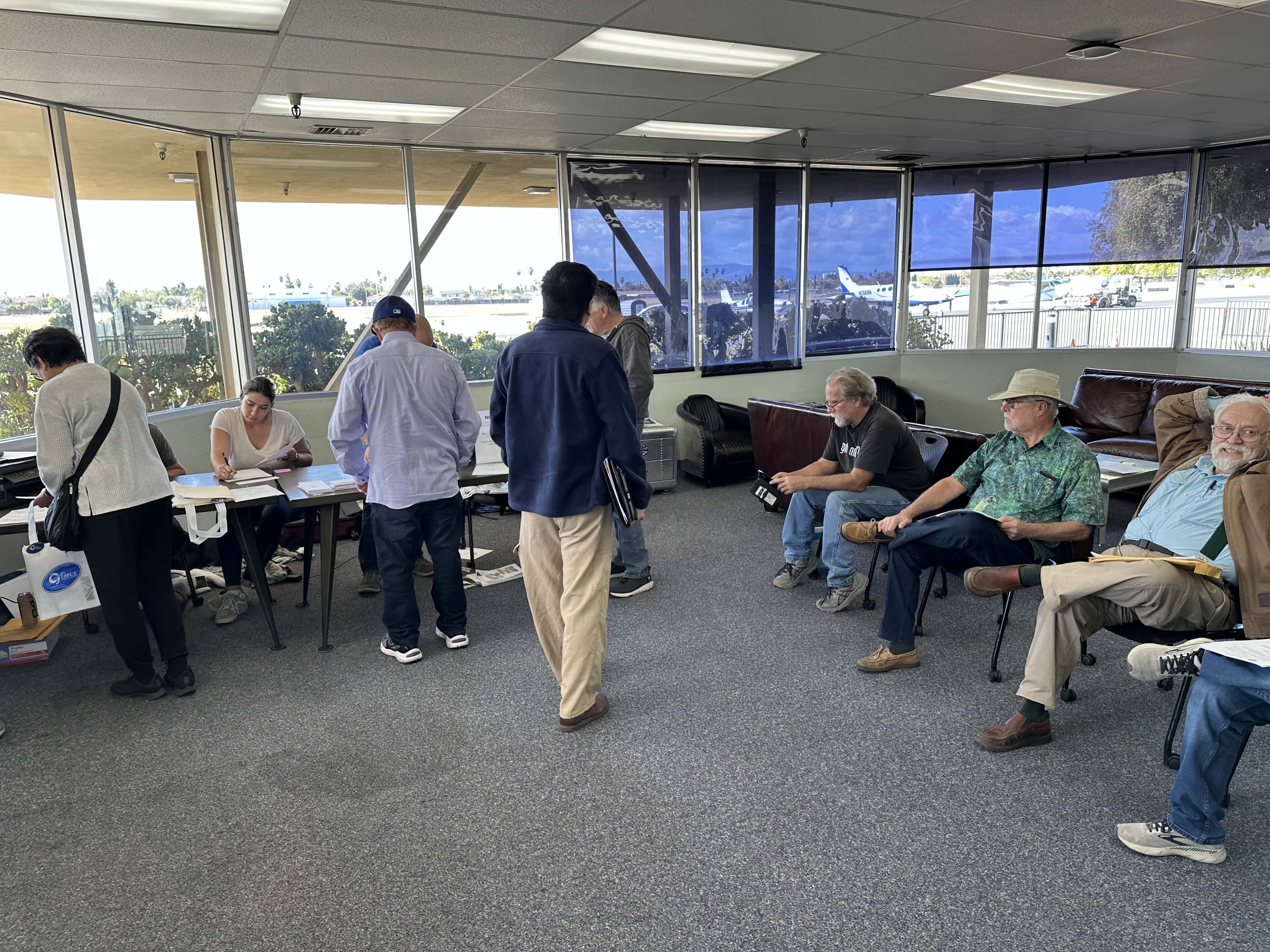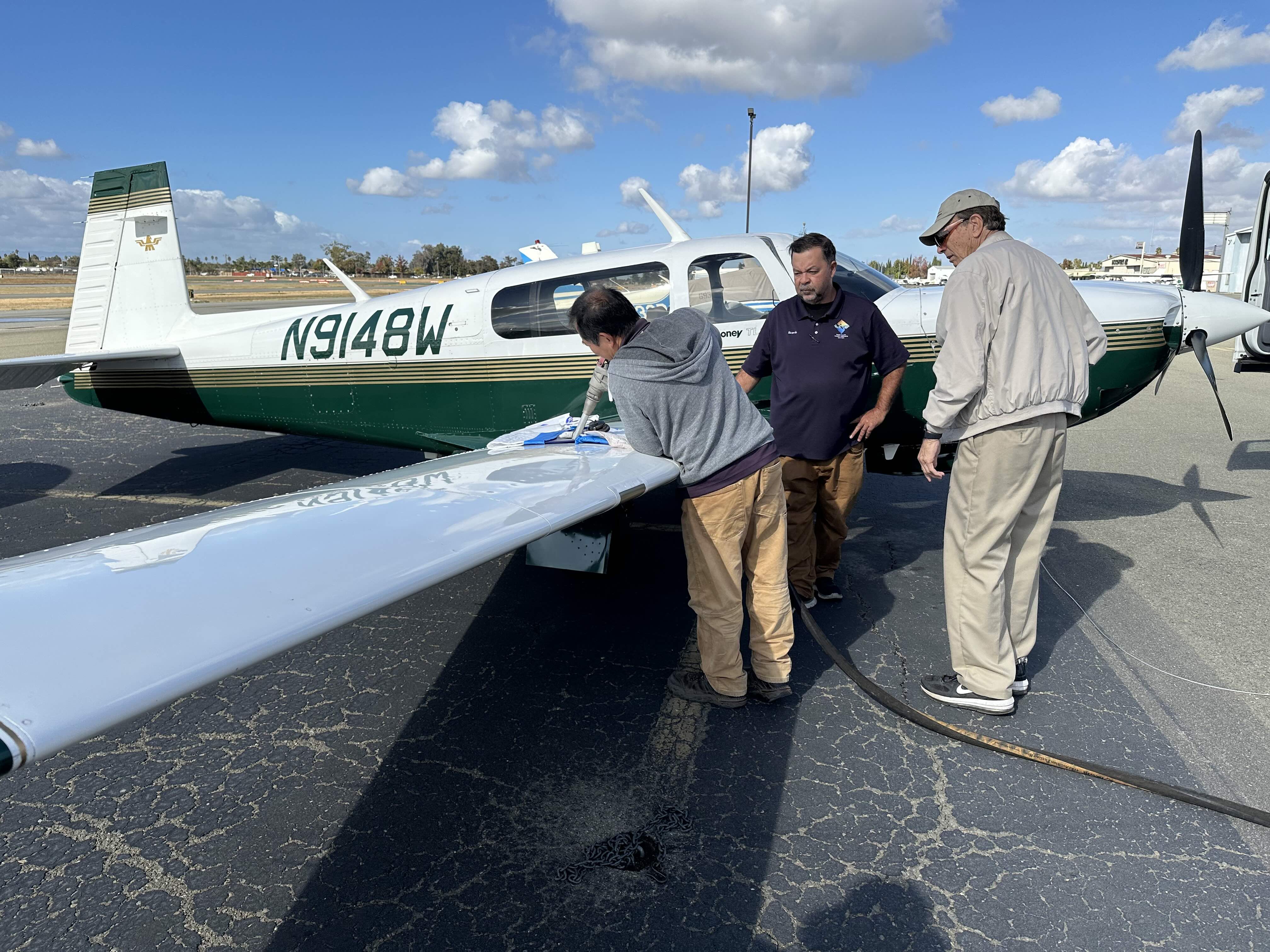Click Here to View This Page on Production Frontend
Click Here to Export Node Content
Click Here to View Printer-Friendly Version (Raw Backend)
Note: front-end display has links to styled print versions.
Content Node ID: 423849
Six years before the deadline for the U.S. to switch to unleaded avgas, the first airport to sell General Aviation Modifications Inc.’s (GAMI) G100UL high-octane unleaded avgas to airplane owners celebrated the new fuel’s availability. Northern California’s Reid-Hillview (KRHV) welcomed airplane owners on Saturday to the inauguration of G100UL with 7,500 gallons priced at $6.99 per gallon, lower than prices for leaded 100LL avgas at some local San Francisco Bay Area Airports.
At the event, GAMI and the airport arranged for a mechanic with inspection authorization to help owners fill out and sign off on the supplemental type certificate (STC) paperwork required to use G100UL in their airplanes.

The standard (until now) 100LL has not been available at KRHV or nearby San Martin Airport (E16) for nearly two years due to local concerns over lead contamination, which studies have not conclusively shown is a result of burning 100LL in aircraft. The general aviation industry has committed to replacing 100LL with unleaded fuels by the end of 2030 through the Eliminate Aviation Gasoline Lead Emissions (EAGLE) program.
So far, Swift Fuels has obtained approval for its lower-octane unleaded avgas through the STC process. The company plans to meet ASTM International standards with its in-development 100R 100-octane fuel. In 2022, GAMI’s G100UL received FAA STC approval for “every spark-ignition piston engine and every airframe using a spark ignition piston engine in the FAA’s type certificate database,” according to GAMI. Although this includes engines in helicopters, it doesn’t yet include helicopter airframes, but GAMI is working on adding these. The company has arranged with refiner Vitol to manufacture G100UL and for an independent transportation company to bring the fuel to KRHV.
To use GAMI’s G100UL, aircraft owners must purchase an STC for their engine and airframe, which costs roughly the price of a tankful of fuel, according to GAMI co-founder and aeronautical engineer George Braly.
Winfried Wilke, owner of a Beechcraft A36 Bonanza based at San Martin, came to the inauguration event and joined the line of aircraft owners waiting to buy the STCs. He is hoping that San Martin will be one of the next airports to adopt G100UL so he doesn’t have to keep flying elsewhere to buy fuel.
Nearly 50 people had lined up at the airport office’s front door when it opened Saturday morning, according to Braly. He credited Eric Peterson, airports director for the county of Santa Clara, with helping bring G100UL to KRHV. “Management and the political leadership in Santa Clara County, they decided this was the right thing to do,” he said.
The ban on leaded fuel at KRHV and San Martin ended up causing more flying and thus more theoretical lead pollution because owners had to fly to other airports to buy 100LL. Aircraft with high-compression engines can’t use the lower-octane Swift unleaded avgas, and this left owners of high-performance airplanes with fewer options. “Now all that nonsense gets to stop,” Braly said. “It made no sense environmentally.”
Vitol has manufactured 1 million gallons of G100UL, according to Braly, and he expects more California airports to adopt the new fuel soon. “I'm not at liberty to start naming names right now, but I think we'll probably see at least one or two more in the next 60 days here in California.”
G100UL has been tested extensively and is fully fungible (can be mixed) with any other approved fuel for spark-ignition piston engines. G100UL does not harm rubber seals in fuel systems or rubber fuel tanks. “You can mix it in any fraction,” Braly said, “any proportion in the tank, and it remains a fuel that conforms to the G100UL specification, and that makes it legal. That was done by very careful consideration and design and collaboration between GAMI and the FAA during the process to approve the specification for the fuel.”

In any case, there is no ASTM specification covering fuel components “within the specification itself,” according to GAMI. “The FAA required GAMI to conduct extensive material compatibility testing of the ‘fuel wetted’ components in your airplane and your engine(s). The result of that testing was determined by the FAA to be essentially the same as the results from similar or the same testing using various formulations of 100LL. In addition, GAMI has successfully conducted extended (more than two years of fuel exposure) real-world testing of the spectrum of components used in the supply and distribution chain for avgas.”
The key reason that 100LL and earlier versions of avgas contain tetraethyl lead is to prevent harmful detonation of the engine. G100UL testing has shown that the fuel offers the same or even higher detonation protection than 100LL. “That detonation testing was personally observed by highly experienced FAA propulsion engineers,” according to GAMI. The fuel even meets the needs of powerful warbird engines, which used to rely on higher-lead versions of avgas.
“The detonation testing data fully supports that application. The standard ASTM detonation test for operation at full take-off power (D909) demonstrates that G100UL is superior even to the old 115/145 ‘purple’ avgas used on DC-7s and Constellations. GAMI anticipates G100UL avgas will be adopted for ‘warbird’ operation under the same limitations, if any, as are appropriate for operation with 100LL. However, detonation testing and laboratory data support a ‘full rated power’ application. One warbird, a P-40 Warhawk, has already been approved to use G100UL avgas.”
GAMI elected not to use the ATSM specification process for G100UL and explained that the FAA doesn’t require this. According to the FAA Policy for Fuel and Oil Operating Limitations, “When an applicant proposes to add a fuel or lubricant to an engine operating limitation with a standard specification that is not an ASTM International standard specification or an SAE International standard, the Engine and Propeller Directorate will evaluate the applicant’s proposed standard specification to determine if it is equivalent.”
FBOs will not have to change their testing and handling procedures when implementing G100UL supply, according to GAMI. “Contrary to various statements from some industry trade organizations, the adoption of G100UL avgas at the airport does not require the FBO to change out filters or make any other changes to the equipment presently used to distribute and pump 100LL into the wing tanks of your aircraft. The existing large-cartridge filters used with airport refueling systems have been evaluated at the laboratory of one of the largest filter manufacturers and found to be completely suitable for use with G100UL avgas.” KRHV’s line service personnel are trained in the NATA Safety 1st program.
GAMI explained that FBOs will not have to clean residual 100LL from their fuel tanks or trucks before adding G100UL. “Because ‘any combination of conforming grade G100UL avgas and conforming 100LL avgas continues to be a fuel chemistry that is deemed to conform to this specification,’ any FBO changing from 100LL to G100UL does not have to take any special precautions or to necessarily clean out residual 100LL in their airport fuel storage tanks. However, they may elect to do so, if they find that appropriate.”
Aircraft owners such as Wilke and Don Kaye (owner of a Mooney TLS that took on a load of G100UL at the event) are looking forward to other benefits of using G100UL. These include not having to clean lead deposits off sparkplugs, less frequent oil changes, and potentially longer engine life. Wear metals detected in oil samples were significantly lower in a Beechcraft C55 Baron used for G100UL testing by the Aircraft Owners and Pilots Association. The left engine running on G100UL had levels of wear metals 40% to 60% lower than the right engine.
“Given the results of the oil analysis shown below, over time we may be able to extend the TBO of our aircraft engines by 50% or 100%,” GAMI noted. Deposits in the cylinder head and on the sparkplugs in two newly overhauled Continental IO-520 engines were almost nonexistent in the engine running on G100UL compared to the other engine running on 100LL, which had typical deposits in the cylinder head and on the sparkplugs, after 50 hours of running time.
As more airplane owners lined up to buy the G100UL STC, Kaye started the Mooney’s engine, taxied to Runway 31L, and took off into the bright blue Bay Area sky.
“For general aviation, this is a really big deal,” Braly said.